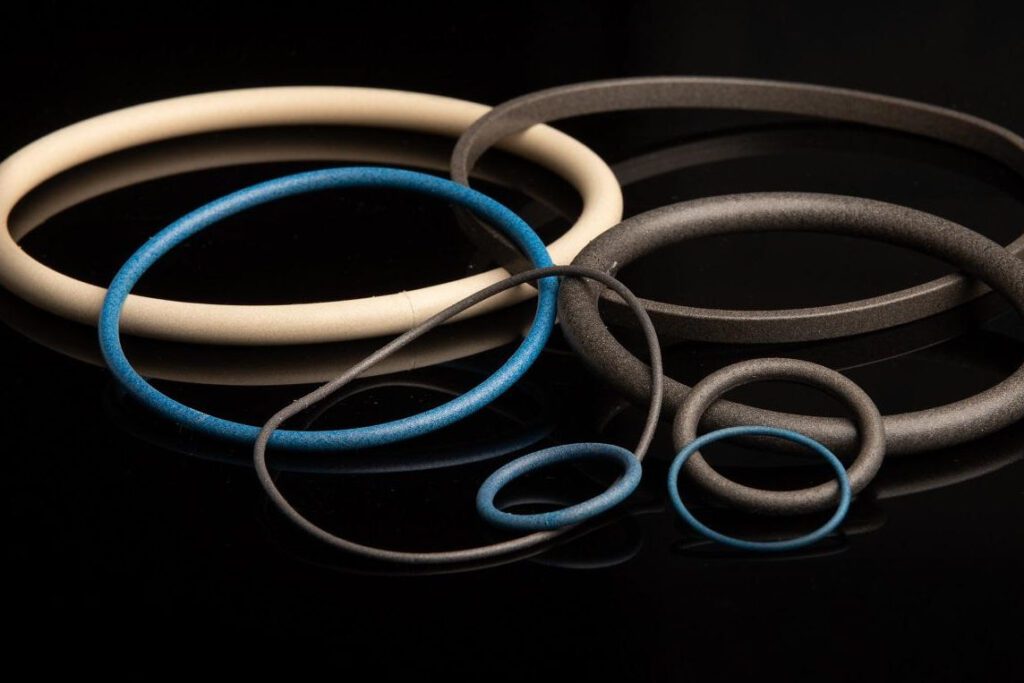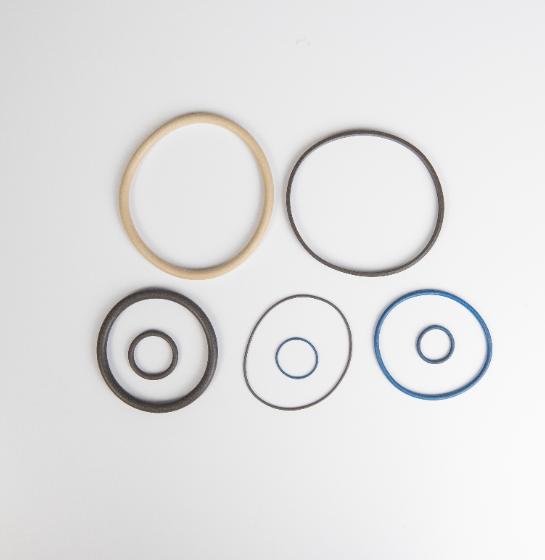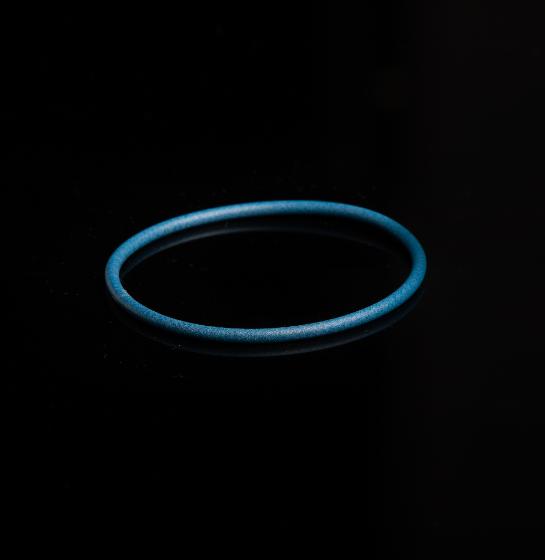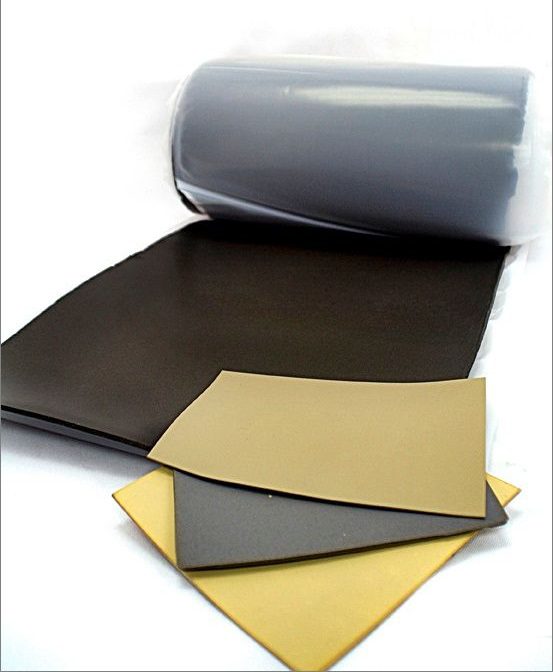
Nickel Aluminum Silicone (SSP2529)
68-durometer. Resists galvanic corrosion. Low outgassing per ASTM E595. Independently tested to MIL-DTL-83528.

SSP fabricates standard EMI O-Rings in M83528 sizes from the MIL-DTL-83528 QPL silicones that we make.
We also fabricate custom EMI O-Rings for non-military and application-specific challenges.
Compare our materials and products to Parker Chomerics CHO-SEAL and GORE EMI O-Rings.
We offer short lead times and low minimum order quantities. Made in USA.
EMI O-rings are donut-shaped gaskets that are designed to fit a groove are crushed in place during installation. Like other types of EMI gaskets, they combine shielding against electromagnetic interference (EMI) with environmental sealing.
Ask SSP for a standard O-rings in M83528 slash sizes, or for custom EMI O-rings for non-military or specialized applications. SSP offers low minimum order quantities (MOQs) and quick turn-around times.
In addition to conductive O-rings, SSP makes EMI gaskets that provide environmental sealing and electromagnetic interference protection. We also supply EMI shielding materials as sheets, rolls, extrusions, and moldable compounds.
EMI O-rings can be molded as a single piece, or bonded from cut lengths of extrusions. The quantity to produce determines which fabrication method is most cost-effective. Either way, our in-house toolroom supports quick and quality-driven production.
Product specifications for EMI O-rings include material type and cross-sectional size and shape.
EMI O-rings are electrically conductive because they are they are made of silicones and fluorosilicones that contain specialized fillers. Normally, elastomers are electrically insulating; however, compounding them with metal, bimetallic, or metal-coated particles imparts electrical conductivity. This is why EMI O-Rings are also called conductive O-rings or electrically conductive O-rings.
Sometimes, SSP receives EMI O-ring inquiries with incomplete or unknown part numbers. If you’re trying to identify the part number you’d like us to make, consider that there are three main sources of this information.
If you cannot identify the original manufacturer of an EMI O-ring, you can find a suitable replacement by determining the product’s specifications.
M83528 EMI O-rings are made from shielding silicones that meet the requirements of the MIL-DTL-83528 specification, and that are fabricated into specific shapes and sizes based on this same U.S. military detail specification.
Conductive O-rings made from MIL-DTL-83528 (M83528) materials are available in what are known as slash sizes. There are two main types of M83528 EMI O-rings. SSP supplies both.
Non-standard EMI O-rings that meet that M83528 requirements aren’t the same as custom O-rings. That’s because M83528 non-standard EMI O-rings still have to meet material and dimensional specifications that are defined in the MIL-DTL-83528 standard, which is sometimes called MIL-G-83528 instead. If you need a custom EMI O-ring for a military or civilian application, contact SSP.
SSP makes the following types of
See the table below for more information.

68-durometer. Resists galvanic corrosion. Low outgassing per ASTM E595. Independently tested to MIL-DTL-83528.

60-durometer. Tested to MIL-DTL-83528. Fuel and solvent resistance.

68-durometer. Resists galvanic corrosion. Independently tested to MIL-DTL-83528 and ASTM B117.

70-durometer. M83528 QPL. Low outgassing. Independently tested to MIL-DTL-83528 and ASTM E595. Fuel and solvent resistance.

65-durometer. M83528 QPL. Low outgassing. Independently tested to MIL-DTL-83528 and ASTM E595.

72-durometer. Resists galvanic corrosion. Independently tested to MIL-DTL-83528. Fuel and solvent resistance.
What’s the main difference between silicone and fluorosilicone? Fundamentally, fluorosilicone provides enhanced chemical, fuel and oil resistance. Fluorosilicones also resist extreme temperatures and have broader temperature resistance, including to lower temperatures.
SSP offers EMI O-rings made from cost-effective alternatives to CHO-SEAL materials from Parker Chomerics.
CHOMERICS® and CHO-SEAL® are registered trademarks of Parker Hannifin Corporation. SSP is not a Parker Chomerics CHO-SEAL distributor.
SSP makes EMI O-rings from materials that provide alternatives to discontinued UL 94 V0 flame-resistant EMI shielding materials from Gore.
Gore® is a registered trademark of W.L. Gore & Associates, Inc. SSP is not a Gore distributor.Gore® is a registered trademark of W.L. Gore & Associates, Inc. SSP is not a Gore distributor.
SSP offers both molded EMI O-rings and bonded EMI O-rings. SSP can compression mold EMI O-rings as single pieces or bond them from cut lengths of EMI extrusions.
Remember that molded EMI O-rings are recommended for higher volumes, and that some M83528 requirements apply to molded (rather than bonded) products.
When are molded EMI O-rings the right choice? Consider the example of a designer who orders prototypes of molded EMI O-rings with a 0.93 in. cross-section and a 4.7-in. diameter.
The cost is $2500 for a small, one-cavity mold and the lead time is 8 weeks. Fit testing reveals an issue with the enclosure’s dimensions, and the designer needs EMI O-rings with a diameter of 4.9 in. instead. New tooling for another $2500 is ordered, and the lead time is another eight weeks. By the time fit testing is successfully completed, the designer has paid $5000 for tooling alone and waited 16 weeks just to confirm the prototype gasket works.
If the designer had ordered hot-spliced EMI O-rings instead, the savings in time and money would have been significant. Instead of larger and smaller molds, a single hot-splice tool could have been used. The designer could have received samples in both 4.7 and 4.9 in. as well O-rings in an intermediate diameter of 4.8 in. If the designer discovered that the EMI O-ring diameter of 4.7 in. was too small, no additional tooling would have been needed. Production for 4.9-in. diameter O-rings could then have begun using the same hot-splicing tool.
There are three ways to bond EMI O-Rings. SSP uses the third method: hot splicing (vulcanizing) with a conductive silicone adhesive.
EMI O-rings have applications in electric vehicles, robotic arms, medical infusion pumps for IVs, 5G telecommunications, and aerospace electronics. EMI O-ring applications span multiple industries. Here are some examples.
Shielded electronic enclosures
Rack-mounted equipment
PCB enclosures
Control panels
Sensor housings
Avionics compartments
Military communication devices
Satellite systems
Missile guidance systems
Radar enclosures
Electric vehicle battery housings
Infotainment systems
Advanced driver-assistance systems (ADAS)
Under-the-hood electronics
Diagnostic equipment
MRI and imaging systems
Patient monitoring devices
Control cabinets in high-noise environments
Robotics
Factory automation systems
EMI-sensitive test equipment
Cell towers and 5G equipment
Base station enclosures
Satellite communication gear
Spacecraft electronics
Satellite shielding
Launch system controls
EMI-shielded camera enclosures
Sensitive listening or scanning equipment